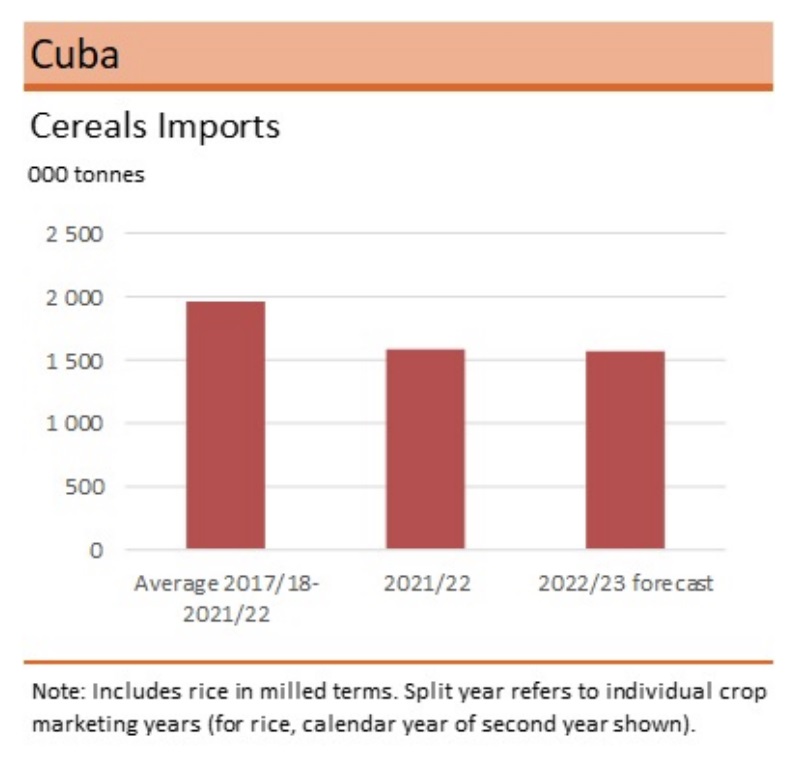Mexico City, Cuba. – In its first newsletter of 2023 on Cubathe Global Information and Early Warning System on Food and Agriculture (GIEWS), belonging to the United Nations Fund for Food and Agriculture (FAO), predicts that access to food will be even more difficult on the island.
According to the report, the availability of food in local markets has been declining since 2019, due to low levels of domestic production and imports. This is a trend that will continue in 2023, according to forecasts and show the recurring citizen complaints.
Less rice in Cuba
The bulletin indicates that the first sowing of rice in 2023, which represents a third of the total harvested annually, will once again be less than what is required. FAO forecasts the area planted to decline for the fourth consecutive year and remain at below-average levels due to persistent lack of agricultural inputs.
Pinar del Río, one of the four provinces that produces the most grain, will have a low level of planting of this product. This is due to the fact that the irrigation system was damaged by the passage of hurricane ian and it has not yet been fully repaired.
In addition to these failures in the irrigation system, the report notes that the lack of chemical fertilizers led farmers to use biofertilizers that did not give the same results. Fortunately, according to the FAO, the few rains in the last quarter of 2022 did not affect the germination conditions of rice crops. Otherwise, the situation would be even worse.
Despite this, the United Nations body does warn that from “February to March, dry weather conditions are expected in the western part of the country, which are likely to limit yield potential.”
Like rice, the corn planting in 2023 will once again be less than the average planted in Cuba.
Less import of cereals
The GIEWS bulletin indicates that this year Cuba will import a level of cereals below the average (1.6 million tons). Among the factors that affect this decrease are “the decrease in the population since 2019 and the low livestock production.” In the case of livestock, it has been a constant since the beginning of Castroism. The other variable pointed out by the FAO is related to the current migratory wave. Since 2019, Cubans have not stopped emigrating legally and illegally, breaking historical records.

In addition to these factors, although the Government of Cuba wanted to export, it does not have the necessary money. According to the bulletin, cereal imports in the 2021/2022 season were well below average, as high international cereal prices “limited the country’s import capacity.”
Why will we have less food?
The country’s ability to import food products and essential fuels was limited by the high level of international prices, with aggravating effects on domestic supply, according to GIEWS.
The economic crisis and inflation exacerbated by the currency unification they are also part of the factors that are affecting access to food.
After the monetary unification in January 2021, which meant the devaluation of the country’s currency by 96%, inflation skyrocketed. Annual inflation rates for food were officially estimated at 114% in 2021 and 63% in November 2022. High food prices have severely eroded the purchasing power of Cubans and made access even more difficult. to them.

















